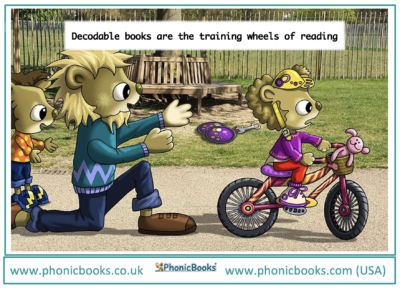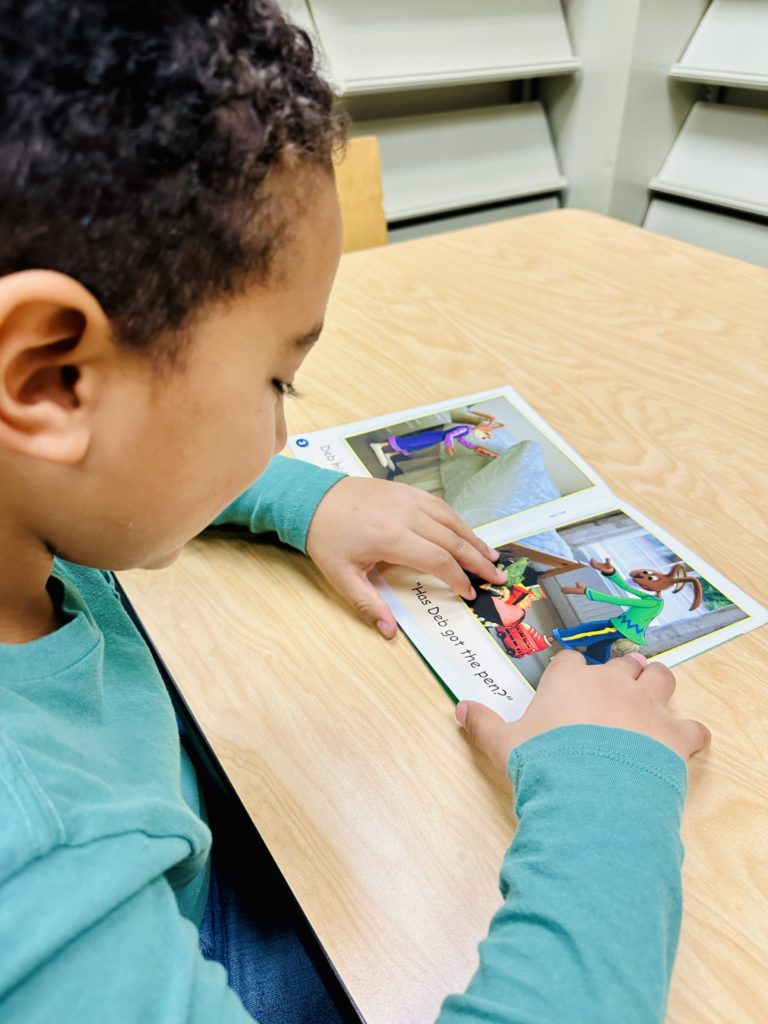What are decodable books? Although the rise of the Science of Reading movement has meant that systematic phonics teaching programs are gaining popularity in the US, one of the most frequently asked questions is still, “What are decodable books?” Phonic Books co-founder, Tami Reis-Frankfort, provides a brief clarification of the meaning of the term, ‘decodable books,’ and explains why they are so important for effective reading instruction.
Decodable books are reading exercises.
They offer students an opportunity to practice the phonic knowledge and skills they have learned within a controlled text. When students are taught math, they are given exercises to practice what they have been taught, in order to internalize the new learning and to develop automaticity. Decodable texts perform a similar role in reading instruction.
Decodable books facilitate successful reading of children’s literature.
Detractors of decodable books confuse the purpose of these books. They are not created to compete with wonderful children’s literature, but are used for only a short time, as ‘training wheels’ to help children develop good decoding skills. Once these skills are in place, the training wheels come off and children can move on to independent reading of rich and varied children’s literature.
Decodable books focus on a target phoneme (sound) or grapheme (spelling).
After students have been taught a specific phoneme-grapheme correspondence, they can use a decodable book to practice reading. The first books in the scheme will have simple words but as the student progresses, the words will get more complex and will look similar to other reading books. The difference is that they are learning a specific part of the phonic code.
Decodable books can be read independently
Once students have been taught the target phonemes and spellings in a decodable book, they can ‘sound out’ all of the words and read independently.
 Why is this important?
Why is this important?
- Decodable books encourage students to ‘blend’ and not guess unfamiliar words
- Students develop a self reliant approach to reading in the beginner reader
- The reader experiences immediate success and develops confidence and enthusiasm for reading
- They practice the phonics taught in the classroom within the context of a story
- They make sense of phonics: we learn phonics in order to read fun books
- Children start reading from the very beginning. They only need to learn a few sounds, and how to blend them, and they will be able to experience reading independently!
#decodablebooks #scienceofreading #systematicphonics #trainingwheels
* * *
Why should I choose Phonic Books for our decodable books?
Phonic Books decodables were created by three dyslexia and reading specialists. This means the books are backed by more than 89 years of relevant experience. Here are just some of the books’ benefits:
- They are truly decodable with a gradual introduction of high frequency or tricky words
- They can be used with any phonics program
- They are highly structured, with a steady, cumulative progression, so that all children can learn to read
- Each book has the graphemes (spellings) clearly printed on the front cover – to help you match the books to your phonics teaching
- Each book has the phonic sequence and scope of the series clearly presented – to help you plan how you will match the books to your phonics program
- They are designed to engage and motivate beginner readers
- There are multiple books at each stage of the progression to ensure sufficient reading practice
- They are complemented by easy-to-use workbooks for further reading support
- Phonic Books also offer a unique range of age-appropriate, exciting books for older, struggling readers who need more practice
Check out Phonic Books full range of decodable books for beginner readers and older readers.


